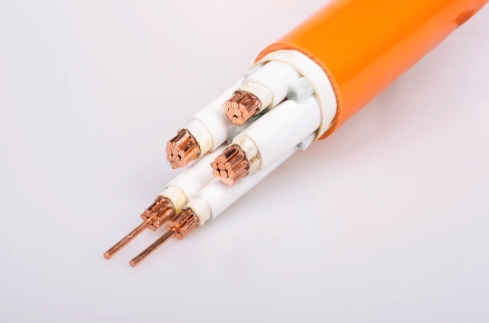Introduction
Power cables are an essential component of any electrical system, carrying electricity from the source to the end-users. In various industries and applications, the safety and reliability of power cables are paramount. One crucial aspect of power cable design is their ability to withstand high temperatures and prevent the spread of fire in case of a fault or overload. Flame retardant power cables play a vital role in ensuring the safety of people and property by minimizing the risk of fire incidents. This article explores the significance of flame retardant power cables, their construction, testing methods, and applications in different industries.
Importance of Flame Retardant Power Cables
Flame retardant power cables are specifically designed to resist the propagation of fire along the cable length. In the event of a fire, these cables help prevent the flames from spreading rapidly, providing valuable time for evacuation and firefighting efforts. By incorporating flame retardant materials in their construction, these cables reduce the risk of fire-related accidents and property damage. In critical applications such as power plants, industrial facilities, and residential buildings, the use of flame retardant power cables is essential to meet safety regulations and protect lives.
Construction of Flame Retardant Power Cables
Flame retardant power cables are constructed using materials that have inherent fire-resistant properties or are treated with flame retardant additives. The key components of a flame retardant power cable include the conductor, insulation, and sheath. The conductor is typically made of copper or aluminum and serves as the medium for carrying electrical current. The insulation layer surrounds the conductor and provides electrical insulation as well as protection against external elements. In flame retardant cables, the insulation material is formulated to resist combustion and limit the spread of fire.
The sheath is the outer layer of the cable that protects the internal components from mechanical damage and environmental factors. In flame retardant power cables, the sheath material is also designed to inhibit the propagation of fire. Common materials used in the construction of flame retardant power cables include cross-linked polyethylene (XLPE), low-smoke zero halogen (LSZH) compounds, and silicone rubber. These materials offer excellent flame retardant properties and low smoke emission characteristics, making them ideal for applications where fire safety is a priority.
Testing Methods for Flame Retardant Power Cables

To ensure the effectiveness of flame retardant power cables, rigorous testing procedures are conducted to evaluate their performance in fire scenarios. Various international standards such as IEC, ASTM, and UL specify testing methods for flame retardancy, fire resistance, and smoke emission of power cables. The most common tests include the flame spread test, oxygen index test, smoke density test, and heat release test.
High flex life control cables measures the rate at which flames propagate along the cable length when exposed to a controlled ignition source. A low flame spread rate indicates good flame retardant properties. The oxygen index test determines the minimum concentration of oxygen required to sustain combustion of the cable material. Materials with high oxygen index values are considered more flame retardant.
The smoke density test evaluates the amount of smoke emitted during a fire event involving the cable. Low smoke emission is desirable to maintain visibility and facilitate evacuation procedures. The heat release test measures the amount of heat released by the cable when subjected to a fire. Cables with low heat release values are less likely to contribute to fire growth and intensity.
Applications of Flame Retardant Power Cables
Flame retardant power cables find wide-ranging applications in industries where fire safety is a critical concern. Some common applications include:
1. Building and Construction: Flame retardant power cables are extensively used in commercial and residential buildings to ensure compliance with fire safety regulations. These cables are installed in electrical wiring systems, emergency lighting, fire alarms, and other essential systems to minimize the risk of fire incidents.
2. Industrial Plants: In industrial facilities such as refineries, chemical plants, and manufacturing plants, flame retardant power cables are used to power equipment and machinery. The presence of flammable materials and high-temperature processes necessitates the use of fire-resistant cables to prevent accidents and protect workers.
3. Transportation: Flame retardant power cables are employed in various modes of transportation, including trains, airplanes, and ships. These cables provide reliable power distribution in critical systems such as propulsion, lighting, communication, and safety equipment. In the event of a fire onboard, flame retardant cables help contain the spread of flames and ensure passenger safety.
4. Data Centers: Data centers house a large number of servers and networking equipment that generate heat and require continuous power supply. Flame retardant power cables are used to interconnect these devices and maintain the integrity of data transmission. The fire-resistant properties of these cables help safeguard valuable data and prevent service disruptions.
Conclusion
Flame retardant power cables play a crucial role in enhancing the safety and reliability of electrical systems across various industries. By incorporating fire-resistant materials and design features, these cables help mitigate the risk of fire incidents and protect lives and property. The construction, testing methods, and applications of flame retardant power cables highlight their importance in ensuring compliance with safety standards and regulations. As the demand for fire-safe electrical solutions continues to grow, the use of flame retardant power cables will remain essential in safeguarding critical infrastructure and promoting a safe working environment.
